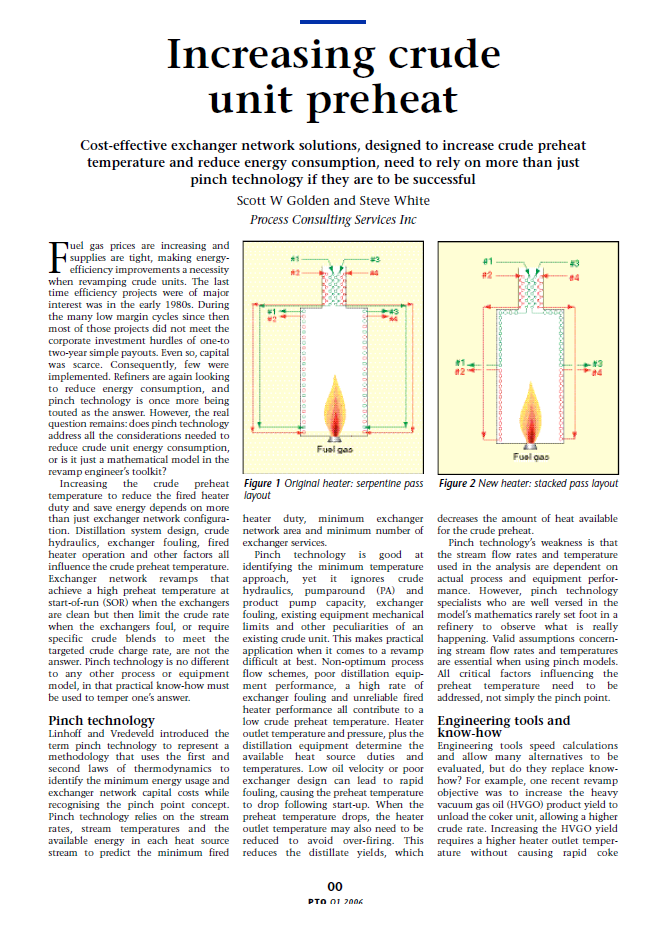Increasing Crude Unit Preheat
SUMMARY
Cost-effective exchanger network solutions, designed to increase crude preheat temperature and reduce energy consumption, need to rely on more than just pinch technology if they are to be successful.
TEXT
Fuel gas prices are increasing and supplies are tight, making energy efficiency improvements a necessity when revamping crude units. The last time efficiency projects were of major interest was in the early 1980s. During the many low margin cycles since then most of those projects did not meet the corporate investment hurdles of one-to-two-year simple payouts. Even so, capital was scarce. Consequently, few were implemented. Refiners are again looking to reduce energy consumption, and pinch technology is once more being touted as the answer. However, the real question remains: does pinch technology address all the considerations needed to reduce crude unit energy consumption, or is it just a mathematical model in the revamp engineer’s toolkit?
Increasing the crude preheat temperature to reduce the fired heater duty and save energy depends on more than just exchanger network configuration. Distillation system design, crude hydraulics, exchanger fouling, fired heater operation and other factors all influence the crude preheat temperature. Exchanger network revamps that achieve a high preheat temperature at start-of-run (SOR) when the exchangers are clean but then limit the crude rate when the exchangers foul, or require specific crude blends to meet the targeted crude charge rate, are not the answer. Pinch technology is no different to any other process or equipment model, in that practical know-how must be used to temper one’s answer.
Linhoff and Vredeveld introduced the term pinch technology to represent a methodology that uses the first and second laws of thermodynamics to identify the minimum energy usage and exchanger network capital costs while recognizing the pinch point concept. Pinch technology relies on the stream rates…

